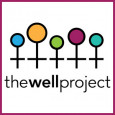This fact sheet originally appeared on and can be read in its entirety at The Well Project.
Choosing a method for feeding their babies is one of the most important decisions expectant and new parents make. This decision can be even more complicated when the birthing parent is living with HIV. For those who may want to explore breastfeeding as an option, the information available to mothers living with HIV can be confusing.
When a woman has an undetectable viral load (not enough HIV in the blood for tests to measure), the chance that she will transmit HIV to her sexual partners is zero, and the chance that she will transmit HIV to her baby during pregnancy or birth is very low. However, while the risk of HIV transmission through breastfeeding when the mother’s viral load is undetectable is also low, the level of risk is not zero as is the case with sexual transmission when the person with HIV has an undetectable viral load.
If you are a woman living with HIV in an area of the world where access to resources like clean water, refrigeration, and medical care are limited, the World Health Organization (WHO) recommends that you breastfeed if you are taking HIV drugs. A course of HIV drugs may also be recommended for the baby during breastfeeding. The reason for this recommendation is that, in such resource-limited settings (for instance, many areas of Africa or India), infants are more likely to develop diarrhea and other illnesses, and may die from these. Breast milk contains substances that protect and strengthen a child’s immune system, even after they stop breastfeeding. Because of this, breast milk may help children to survive these health conditions. Furthermore, formula feeding may not be an option in these areas due to lack of funds to purchase it, clean water to mix it with (if the formula is powdered), or refrigeration to keep it fresh. Health authorities have determined that the benefits of breastfeeding outweigh the risks of HIV in areas where resources are constrained in this way.
If you are a woman living with HIV in a resource-rich region of the globe, such as the United States or Europe, you have likely been advised not to breastfeed your babies. HIV treatment guidelines written by health organizations like the US Department of Health and Human Services (DHHS), European AIDS Clinical Society (EACS), and the British HIV Association (BHIVA) all recommend that women living with HIV avoid breastfeeding. Infant formula (as well as clean water and refrigeration) tend to be readily available in these areas, and the chances of a baby dying from illnesses for which breast milk can provide protection is much lower. Therefore, these guidelines are based on the belief that the risk of a baby getting HIV from breast milk is not justified when parents can access safe alternatives.
However, parents in resource-rich areas may be aware of extensive research showing that breast milk is the best food for most babies, protecting a growing baby’s health while satisfying all of their nutritional needs. There may also be emotional and cultural reasons why women may want to consider breastfeeding, even if they live in an area where formula is easily accessible. They may experience pressure from their families to breastfeed. Not breastfeeding may become a matter of unwanted disclosure of their HIV status if members of their communities question why they are using formula. If a woman has moved from a resource-limited country to a resource-rich area, she may wonder why she is being given a different set of instructions and potential restrictions in her new country.
The process of deciding how to feed your infant can be overwhelming for parents who are living with HIV. This fact sheet provides some of the information you may want to consider in that process. Continue reading...
The Well Project is a non-profit organization whose mission is to change the course of the HIV/AIDS pandemic through a unique and comprehensive focus on women and girls. Visit their website, www.thewellproject.org, to access fact sheets (English and Spanish), blogs, and advocacy tools, and to join a global community of women living with HIV.








Comments
Comments